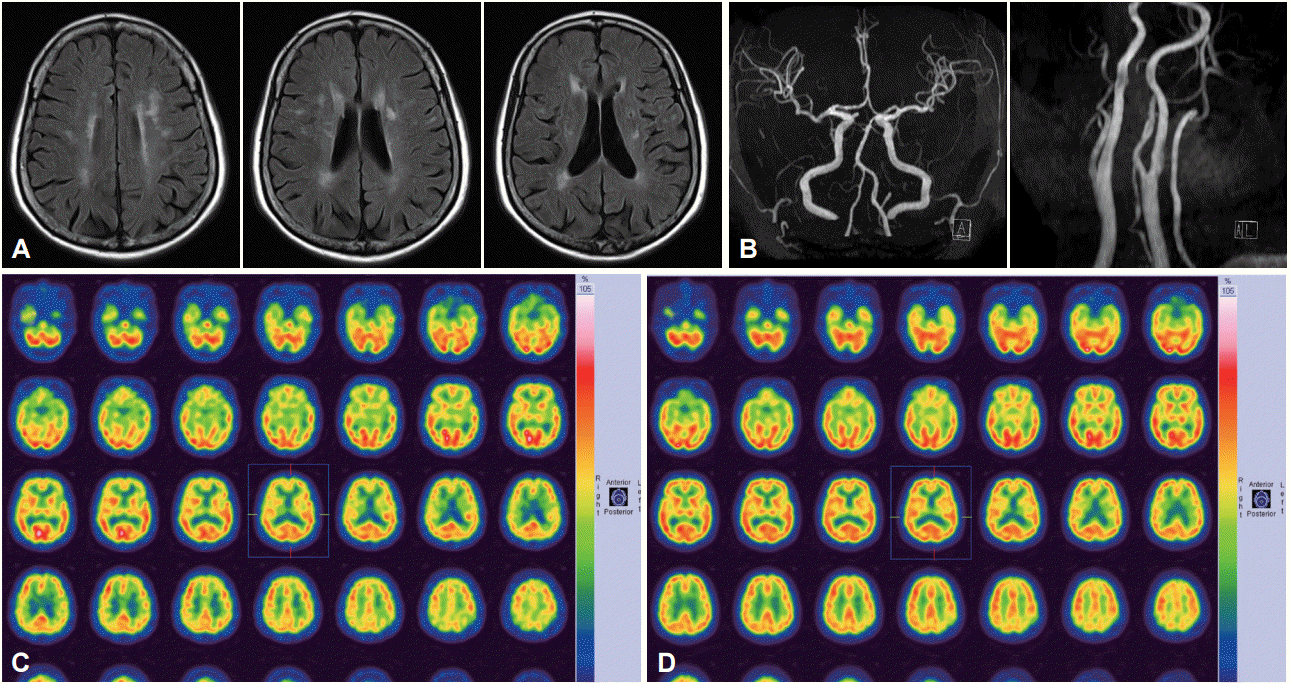Articles
- Page Path
- HOME > J Mov Disord > Volume 10(1); 2017 > Article
-
Letter to the editor
Camptocormia with Transient Ischemic Attack - Ju-Hee Oh, Dong-Woo Ryu, Si-Hoon Lee, Joong-Seok Kim
-
Journal of Movement Disorders 2017;10(1):62-63.
DOI: https://doi.org/10.14802/jmd.16043
Published online: January 18, 2017
Department of Neurology, College of Medicine, The Catholic University of Korea, Seoul, Korea
- Corresponding author: Joong-Seok Kim, MD, PhD, Department of Neurology, Seoul St. Mary’s Hospital, College of Medicine, The Catholic University of Korea, 222 Banpo-daero, Seocho-gu, Seoul 06591, Korea / Tel: +82-2-2258-6078 / Fax: +82-2-599-9686 / E-mail: neuronet@catholic.ac.kr
• Received: September 19, 2016 • Revised: October 17, 2016 • Accepted: October 31, 2016
Copyright © 2017 The Korean Movement Disorder Society
This is an Open Access article distributed under the terms of the Creative Commons Attribution Non-Commercial License (http://creativecommons.org/licenses/by-nc/3.0/) which permits unrestricted noncommercial use, distribution, and reproduction in any medium, provided the original work is properly cited.
Figure 1.Magnetic resonance imaging of the patient’s brain showed multiple hyperintensities in subcortical white matter (A) and magnetic resonance angiography showed no definite intracranial and extracranial stenoses (B). 99mTc-ethylcysteinate dimer single photon emission computed tomography scan of the brain at baseline (C) and after acetazolamide (D) showed a decrease in cerebral blood flow in the left parietal cortex without vascular reserve.


- 1. Lenoir T, Guedj N, Boulu P, Guigui P, Benoist M. Camptocormia: the bent spine syndrome, an update. Eur Spine J 2010;19:1229–1237.ArticlePubMedPMC
- 2. Finsterer J, Strobl W. Presentation, etiology, diagnosis, and management of camptocormia. Eur Neurol 2010;64:1–8.ArticlePubMed
- 3. Srivanitchapoom P, Hallett M. Camptocormia in Parkinson’s disease: definition, epidemiology, pathogenesis and treatment modalities. J Neurol Neurosurg Psychiatry 2016;87:75–85.ArticlePubMed
- 4. Nieves AV, Miyasaki JM, Lang AE. Acute onset dystonic camptocormia caused by lenticular lesions. Mov Disord 2001;16:177–180.ArticlePubMed
- 5. Takakusaki K. Neurophysiology of gait: from the spinal cord to the frontal lobe. Mov Disord 2013;28:1483–1491.ArticlePubMed
- 6. Lajoie K, Drew T. Lesions of area 5 of the posterior parietal cortex in the cat produce errors in the accuracy of paw placement during visually guided locomotion. J Neurophysiol 2007;97:2339–2354.ArticlePubMed
- 7. Park JH, Kang YJ, Horak FB. What is wrong with balance in Parkinson’s disease? J Mov Disord 2015;8:109–114.ArticlePubMedPMCPDF
REFERENCES
Figure & Data
References
Citations
Citations to this article as recorded by 

- Mesial Frontal Lobe Infarction Presenting as Pisa Syndrome
Kazuyuki Noda, Maya Ando, Takayuki Jo, Anri Hattori, Kotaro Ogaki, Mizuho Sugiyama, Nobutaka Hattori, Yasuyuki Okuma
Journal of Stroke and Cerebrovascular Diseases.2020; 29(8): 104882. CrossRef - Transient camptocormia with citalopram treatment in a patient with mixed dementia–A case report
Segal Inbal, RN Galia Fisher, Merims Doron
Archive of Gerontology and Geriatrics Research.2020; : 040. CrossRef
Comments on this article
 KMDS
KMDS
 E-submission
E-submission
 PubReader
PubReader ePub Link
ePub Link Cite
Cite

